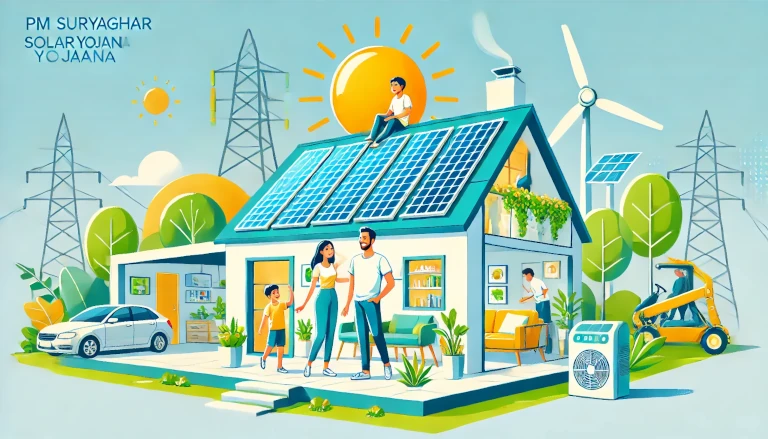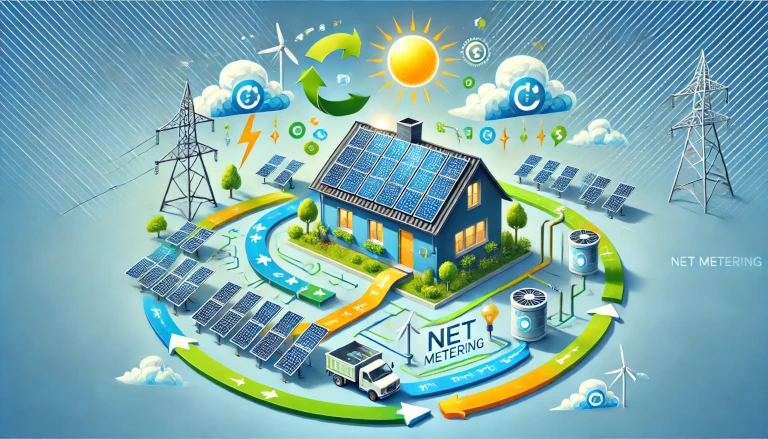Solar panels have revolutionized the way we think about energy. They are now seen as one of the most sustainable ways to generate electricity without harming the environment. But how exactly do solar panels work to generate electricity? In this blog post, we will break down the process in simple language, using easy-to-understand examples to explain the science behind solar power.
What is a Solar Panel?
A solar panel is a device that converts sunlight into electricity. The core technology used in solar panels is called photovoltaic (PV) cells. These cells capture the sun’s energy and turn it into electrical energy, which can then be used to power homes, offices, and even large industrial complexes.
How Solar Panels Generate Electricity
- Absorption of Sunlight
When sunlight hits the surface of a solar panel, the photovoltaic cells (made of semiconductor materials like silicon) absorb the sun’s energy. The energy from sunlight consists of particles called photons. - Creation of Electron Flow
The energy from the photons knocks electrons loose from atoms within the PV cells. This movement of electrons generates direct current (DC) electricity.
Example:
Think of sunlight as a stream of tiny energy bullets (photons) hitting the surface of the panel. These bullets knock out electrons from their positions, allowing them to move freely, which is what we call electricity.
- Conversion of DC to AC
Most electrical appliances and systems in homes and businesses use alternating current (AC) electricity, not DC. A device called an inverter is used to convert the DC electricity generated by the solar panels into AC electricity.
Example:
Imagine DC electricity as water flowing in one direction, while AC is water that alternates its direction. The inverter acts like a switch that flips the flow, making the electricity usable in your home.
- Distribution of Electricity
Once the DC electricity is converted to AC by the inverter, it can be used immediately to power your home. Any extra electricity produced can either be stored in batteries for later use or sent back to the grid, which can earn you credits from your electricity provider.
The Role of Solar Inverters
The solar inverter is a crucial part of any solar power system. Without it, the DC electricity produced by the panels would be useless for most applications. In addition to converting DC to AC, inverters also monitor the system’s performance, ensuring that everything runs efficiently. In modern systems, smart inverters can even shut down the system in case of issues like power outages, ensuring safety.
Types of Solar Panels
There are several types of solar panels available, each with its own pros and cons:
- Monocrystalline Panels
These are made from a single crystal of silicon and are known for their high efficiency. They perform well even in low-light conditions but tend to be more expensive. - Polycrystalline Panels
These are made from multiple silicon crystals and are generally less expensive, but they have a slightly lower efficiency compared to monocrystalline panels. - Thin-Film Panels
Thin-film solar panels are lightweight and flexible, making them ideal for applications where traditional panels would be too bulky. However, they are less efficient than crystalline panels.
Practical Example: How Solar Panels Power a Home
Let’s say you have a 5kW solar system installed on your rooftop. Here’s how the system works throughout the day:
- Morning: As the sun rises, your solar panels begin to absorb sunlight, creating a small amount of electricity.
- Midday: When the sun is at its peak, your solar panels produce the most electricity. The excess energy generated can be sent back to the grid or stored in batteries.
- Evening: Once the sun sets, your panels stop producing electricity. Any energy you use will either come from your battery storage or from the grid if you don’t have a battery system.
Benefits of Solar Panels
- Eco-Friendly
Solar panels generate clean, renewable energy, reducing the need for fossil fuels and lowering greenhouse gas emissions. - Cost Savings
By generating your own electricity, you can significantly reduce your energy bills. Any extra power produced can be sold back to the grid, further saving money. - Energy Independence
Solar panels allow homeowners to become less reliant on the grid, especially when combined with battery storage.
Conclusion
Solar panels are a powerful technology that captures the sun’s energy and turns it into electricity. From the absorption of sunlight by photovoltaic cells to the conversion of DC to AC electricity, this process allows us to harness a free and renewable energy source. Whether you’re looking to lower your carbon footprint or save money on your energy bills, solar panels are an excellent investment for a sustainable future.
Discover more from Green Ecosystem - Renewable Energy, Agriculture, and Environmental Sustainability
Subscribe to get the latest posts sent to your email.


